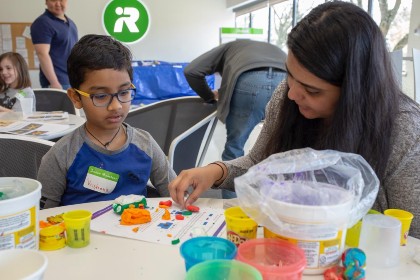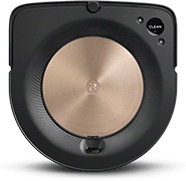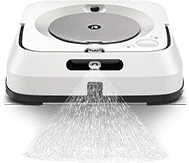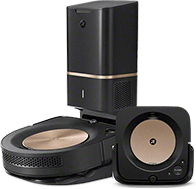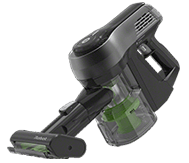The 21st Century Requires Stem Education in Classrooms
From Optimus Prime to R2-D2, robots have fascinated our culture. With STEM subjects and learning styles becoming the norm in education — elementary school, middle school, high school, and lifelong learners alike — there’s no questioning the future of education is STEM.
As education evolves to integrate STEM into all subjects — not just the science classroom or STEM elective — you’re probably wondering, what is the importance of STEM? Why is STEM, all of a sudden, what everyone is talking about in education?
Why is STEM Learning Important?
Science, technology, engineering, and math (STEM) education is increasingly integrated into school districts, starting as early as preschool. As our world becomes progressively technologically advanced (what with more artificial intelligence and machine learning advancements popping up daily), teaching coding should be essential to every curriculum. Competent coding skills are highly sought after by employers. STEM learning teaches much-needed skills that will lead to employability post-high school which may provide for better long-term well-being. Plus, who doesn’t dream of building a real robot sidekick, not just one made out of Lego™ bricks?
The skills kids build through STEM learning, like critical thinking, computational thinking, teamwork, in-depth research, and computer science, lead to success in STEM fields and beyond. Even if your child wants to grow up to be an artist, STEM skills will help them succeed.
“Robotics can meet you where you are. There’s an entry point for everyone. If you are visually design-oriented, there are resources for you. It’s accessible to everyone. There’s a place for everyone’s skill-set in robotics,” Cara Brooks, Community Partnerships Manager at iRobot, explained.
According to the U.S. Department of Commerce, STEM jobs are growing at 24% compared to other fields at 4%. But, the nice thing about STEM jobs is that you don’t have to be a mathematician to get into this field. All different skill sets are needed in robotics.
“You can work in STEM even if you are the kid who likes to sit in the back of the classroom and doodle. There’s a place for everyone in STEM, even the student who is more focused on creative outlets like art, graphics and photography,” Lisa Freed, STEM Program Manager at iRobot.
Give your child a head start.
Try these STEM lessons for early learners.
STEM Education for Problem-Solving
Think back to your childhood. Did you enjoy sitting at your desk, doing arbitrary worksheets to run through math? If you were anything like us, you rolled your eyes and wondered when you would need that skill in your life. But, with STEM education, project-based learning is used to solve real-life challenges. Now, if that’s what we were doing in school, we would know why the skills we learned were important.
STEM teachers use problem-solving as a base. What problem needs to be solved? How can you use science and math to solve that problem? Brooks explained how problem-solving is also the base of building a robot. “When you build a robot, you think, first, about what problem you want to solve.”
(Here’s a blog about how to make a robot.)
A STEM classroom might choose a problem like an oil spill in the ocean. Once a problem is chosen, the teacher will prompt students to brainstorm ideas to solve this problem. This will lead to a hypothesis and testing solutions to the problem.
“A robot goes from being sketched on a piece of paper from an idea in someone’s head to a prototype, to a prototype that actually works, to building a robot, and beyond,” Freed said.
The same goes for all STEM projects. It starts from scratch, from a problem, moves to an idea, and then the testing of possible solutions.
STEM Education for Critical Thinking
Daisy Christodoulou, educationalist and author of Seven Myths about Education, said, “Critical thinking is a skill that is impossible to teach directly but must be intertwined with content.”
Critical thinking is not a skill everyone possesses, it’s not built in, and there is no lesson on “thinking critically.” This skill set is something that needs to be learned through context.
Critical thinking in STEM lessons through history and stories utilizes social media as a technology tool. Ask them to think critically about social media. How has it shaped our lives in both positive and negative ways?
Use storytelling by exploring a past invention and the story behind it. For example, students can research the Slinky, which became a young children’s toy, but was originally invented to stabilize nautical devices at sea. Why did the purpose of the Slinky change? What caused the shift?
(If you’re in need of some toy organization ideas, we – and TikTok – have you covered.)
Looking for more coding and robotics activities?
Check out these projects for elementary school kids.
STEM Education Strategies in the Classroom
Some people might think STEM is only for those interested in math and science, but STEM is accessible to everyone. Freed explained that STEM and robotics fields have roles for every interest. Whether you’re an artist, psychologist, healthcare worker, or engineer, there is a place for you in STEM. “We have researchers. These are people with psychology degrees. We have testers who are engineers. We have highly creative minds who market the robots. All skill sets matter,” said Freed.
She continued, “I’m an engineer, but robot electronics are mind-boggling to me. Engineering gives students a shared language. There’s a place for you. There’s a place for anyone in robotics.”
STEM education strategies can be used in any classroom. Use STEM techniques in a traditional classroom to add much-needed skills like project management, communication skills, problem-solving, and teamwork to any subject. This learning experience uses real-world (in some cases real-time) problems that increase student engagement, allowing students to better understand the world around them while also learning important skills.
Here are three ways you can integrate STEM teaching techniques into your lesson plans:
Project-based learning
This learning style is…you guessed it, based on a project. Students work together, engaging critical thinking skills for an extended period to create a solution to a problem. The STEM teacher is a facilitator, allowing the students to own the project from beginning to end.
Brooks emphasized the importance of assigning roles when using project-based learning. “What makes STEM so exciting is that is requires participation. Exploring past solutions, defining the problem and experimenting creates a hands-on experience for all”.
Problem-based learning
Students are directed to analyze a specific problem. The goal is for students to think critically and find possible solutions. Students can look at problems like homelessness in their city, brainstorm ideas, and develop a non-profit business plan to fix the problem.
Inquiry-based learning
This teaching style is student-led, putting questions first. Students are encouraged to ask questions on a certain topic. This learning environment encourages critical thinking, questioning, and problem-solving.
Four Tools for STEM Teachers in the Classroom
When a school starts a STEM initiative, STEM-related teaching tools are needed for new ed tech and to support STEM activities throughout the school year.
Although you might have some exciting ideas to peak your students’ interests, Freed warns that it isn’t always easy to get the supplies you need. She said, “Not everyone has a robot, but you have something you can take apart, and you learn a lot by taking things apart.”
While you might not have a robot in your science class, it’s not impossible. Freed continued, “For one outreach project, we send our engineers with old robots and a set of screwdrivers to STEM events and just have students take the robots apart
To provide new learning opportunities for STEM students, think outside the box with these tools.
1. Access to iRobot Museum
The iRobot Museum provides free STEM educational programs for students. iRobot works directly with schools to create new learning opportunities for students who might not have the opportunity to learn about robots. “We give virtual tours throughout the school year via Zoom, where the video feed is provided by a mobile robot and Lisa narrates the robot journey,” Brooks explained.
2. Root coding robots
The Root Coding Robot is small and fits any learning environment, from virtual to hybrid to in-person. This robot teaches students to code using progressive learning levels to give a personalized learning experience.
3. Create 3 Robot
Do you have a classroom of advanced makers? High school students will love the Create 3 Educational Robot. Students learn how to program the robot to perform basic behaviors using the fundamentals of robotics, computer science, and engineering. As the student evolves, so does the learning. Students move to advanced applications like navigation and mapping technology.
4. Makey Makey
The Makey Makey invention kit is ideal for elementary school students. It’s an affordable invention kit for STEM classrooms and doesn’t require software or setup. It’s a circuit board that shows students how electricity works. You can make a keyboard using items you already have in your classroom.
Learn to code for free.
STEM Learning Through Robotics
Robots are more accessible now than ever before. Now, robots are in your home. Freed said, “Robots are everywhere including our homes. While students still may draw a blocky human-like figure for a robot, they are slowly learning, some robots are shaped like a Roomba® vacuum.”
With robots becoming part of our everyday life, they become less of sci-fi fantasy and more of our reality. This shift makes it easier to integrate robotics into STEM learning. Taking apart a robot, or other tech devices can teach you as much as building one. Find an old toaster, or broken computer to take apart (carefully) to get hands-on experience with tools, and the technology students know.
Use the everyday devices or robots we have in our life to reverse engineer and explore the engineering design process. Taking apart a robot can teach you as much as building one. iRobot has an inventory of robots that they regularly send to schools so they can get hands-on experience with robotics right in their classroom.
Teachers can create a virtual STEM lab through learning experiences like cool robots, virtual tours, and lessons. By downloading the iRobot Museum app, any teacher can set up a self-paced exploration experience for their students. The app provides a pathway to celebrate curiosity by having students explore topics and themes that interest them and may even surprise them with how vast and varied our robotics development history is.
No matter your budget, STEM effective classrooms have options to bring robotics into lessons, and iRobot is proud to provide free educational opportunities to your classroom. Okay, it might not be an Optimus Prime robot, but students will still have fun learning.


